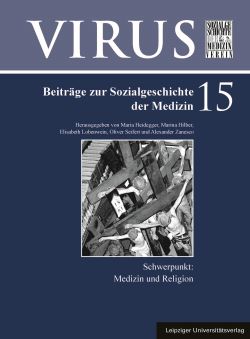
VIRUS Band 15, pp. 055-071, 2020/07/22
Schwerpunkt: Medizin und Religion

Since at least his attendance of the medical schools at Halle and Strasbourg Johann Samuel Carl had turned to the religious movement of pietism. From 1708 to 1736 he lived and worked in Hessian communities (Büdingen, Berleburg) being influenced by the radical pietisticdoctrine of beliefs. Besides his medical practice within these congregations, Carl published several works containing the ideas of his medical and therapeutic concept during this time.It becomes apparent that all his aspects are based on the religious opinion of radical pietism. This is true for both the meaning of disease in general and an individual aspect in special.In order to commonly work on the recovery of health a special kind of doctor-patient relationship based on informed consent was required. Concerning the therapeutic management, Carl demanded expectative and non-invasive methods, the medication in particular should predominantly refer to simplicia being available in the surrounding areas.The ambivalence of Carl’s concept becomes obvious in the context of medical and scientific discussions of that time. Some elements of this opinion are progressive whereas others seem to be precluding further advance due to contemporary standards.
Keywords: Johann Samuel Carl, pietism, doctor-patient-relationship, medical treatment, Cartesianism, medical history of the early 18th century